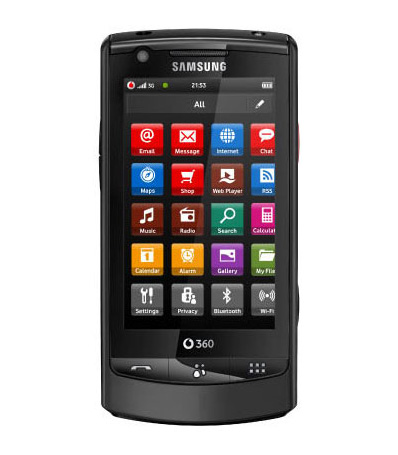 Vodafone has launches its new 360 online services, taking over from its previous Live offerings, and is supporting the launch with new new handsets from Samsung: the Vodafone 360 H1 and Vodafone 360 M1. The new phones are the first handsets running LiMo Release 2, and are just the first of a wave of forthcoming LiMo R2 devices slated for release in the remainder of 2009 and into 2010. The LiMo operating system has often taken a back seat to higher-profile smartphone OS offerings from the likes of Google, Palm, BlackBerry, Microsoft, and Nokia, but the LiMo Foundation does have an impressive list of handset partners on its roster—and if Samsung and Vodafone’s first LiMo R2 offerings are any indication, they might be on to something.
Vodafone has launches its new 360 online services, taking over from its previous Live offerings, and is supporting the launch with new new handsets from Samsung: the Vodafone 360 H1 and Vodafone 360 M1. The new phones are the first handsets running LiMo Release 2, and are just the first of a wave of forthcoming LiMo R2 devices slated for release in the remainder of 2009 and into 2010. The LiMo operating system has often taken a back seat to higher-profile smartphone OS offerings from the likes of Google, Palm, BlackBerry, Microsoft, and Nokia, but the LiMo Foundation does have an impressive list of handset partners on its roster—and if Samsung and Vodafone’s first LiMo R2 offerings are any indication, they might be on to something.
The Vodafone 360 H1 features a large 3.5-inch WVGA AMOLED display, a 5 megapixel autofocus camera with the capability to shoot 720p high-definition video, 16 GB of onboard storage, integrated GPS, plus Wi-Fi and Bluetooth wireless networking capability. But that’s not all: the unit also sports EDGE/GPRS 850/900/1800/1900 and HSDPA mobile broadband capability. The M1 scales back a little bit, bringing a 3.2-inch TFT display, 1 GB of memory (with microSD expansion), a 3 megapixel camera, and integrated GPS. The M1 lacks Wi-Fi, but still offers HSDPA.
Both LiMo R2 phones feature a unique 3D interface that can let users have a depth-based chronological view of mail and calendar items, as well as tie in to exclusive Vodafone services.
Vodafone didn’t announce pricing or availability for the phone, but the H1 and M1 look like promising entries in the smartphone market for the LiMo foundation; hopefully, some of them will make it to the North American market.


